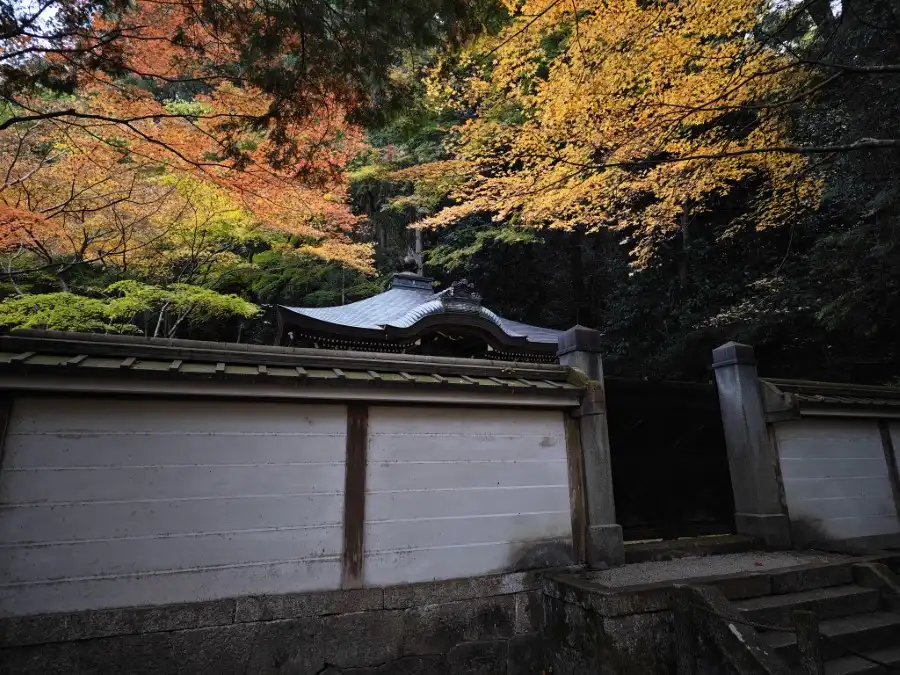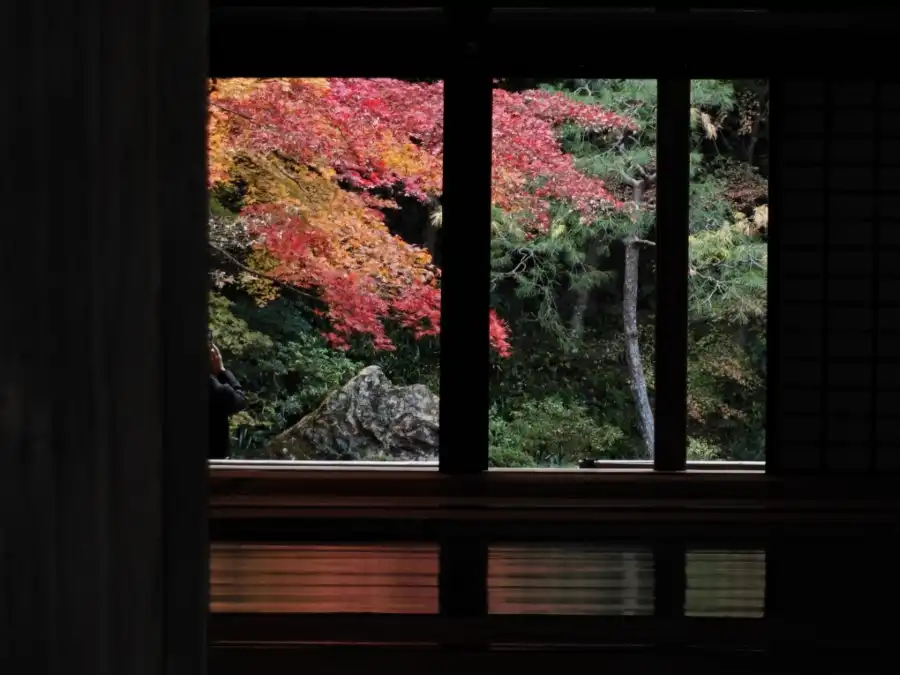Nanzenin Temple, nestled on a hill from Nanzenji Temple, Kyoto, bears historical significance as the former detached palace of Emperor Kameyama, who retired to become a Buddhist monk in 1289. The entrance, reached through the Suirokaku water bridge, unveils a serene hall and an enchanting garden. Designed in the late Kamakura period, the garden exudes tranquility, designated as one of Kyoto’s three most scenic and historic gardens. Keishoin’s donation in 1703 aided the reconstruction of the Hojo, a cypress masterpiece with ink-and-wash paintings. The inner sanctuary houses a wooden statue of Emperor Kameyama, a cultural treasure, while his mausoleum graces the southeast corner of the garden.
Emperor Kameyama retired and became a Buddhist monk in 1289 at his detached palace. At that time, he donated his detached palace to establish a Zen temple, Nanzenji Temple. Nanzenin Temple is the site of Emperor Kameyama’s palace and the birthplace of Nanzenji Temple.
A donation from Keishoin helped the reconstruction of Hojo in 1703. Keishoin was the mother of Tsunayoshi Tokugawa, the fifth shogun of the Tokugawa Shogunate. The building is made of cypress with a hip-and-gable roof and a kokera thatch.
In the center of the inner sanctuary, there is a wooden statue of the Emperor Kameyama (Important Cultural Property). The sliding doors are ink and wash paintings by Kano Yohaku and his son Nyokawa Suikawa. In the southeast corner of the garden, there is a mausoleum. And this is where Emperor Kameyama’s bones were buried according to his will.

The entrance to Nanzenin Temple is located at the top of the hill from the Nanzenji Temple grounds, passing under the Suirokaku water bridge. The hall is located just inside the entrance. The garden on the other side of the hall is particularly beautiful and photogenic.

Garden
The garden of the temple retains the atmosphere of the time. This garden is a typical pond garden of the late Kamakura period. Surrounded by deep forests, the garden is a place of profound tranquility. The designer of the garden might be Hōhō Kameyama himself. This garden was early on designated as one of the three most scenic and historic gardens in Kyoto.
You find the stonework of the waterfall mouth at the far left of the garden. The upper pond is Sogen-ike. Its shape is like a dragon. In the center of the Upper Pond is Horai Island. In the lower pond, there is an island, Shinji-jima. This is a garden for quiet appreciation.





Nearby places from Nanzenin Temple
Nanzenji Temple‘s Hojo garden is also beautiful in autumn.
Saishoin Temple, a sub-temple of Nanzanji Temple, is a quiet temple surrounded by trees. So visitors can enjoy nature in every season.
Related articles:
[…] Nanzenin Temple is where Nanzenji started initially. […]
[…] Ryogin-an is the site of the residence of Daimin Kokushi, the third abbot of Tofukuji Temple from 1281. This temple is the first-ranked sub-temple of the Tofuku-ji temple. Daimin Kokushi died here in 1291 just after the opening of Nanzenji Temple. […]
[…] Nanzanji Temple and its sub-temples are famous for autumn leaves. You can even climb to the top of the gate. […]